The southern frontier is under threat. Will Central Asia protect itself?
Activization of terrorists in Afghanistan
The military-political situation in Afghanistan has seriously deteriorated after the activation of the Islamic State organization banned in the Russian Federation in the Middle East. A number of Afghan religious extremist groups adopted the ideology of the "Islamic state" and declared themselves IS troops on the territory of Afghanistan. The number of terrorist attacks and attacks on government forces and police has increased in the country. Increasingly, the victims of the radicals are civilians. In Afghanistan, representatives of religions other than Islam have not lived for a long time. Even during the Taliban domination, all the Gentiles fled the country, and those who were unlucky were victims of fanatics. Therefore, now on the Afghan land, the victims of terrorists are representatives of other trends in Islam, first of all, Shiites.
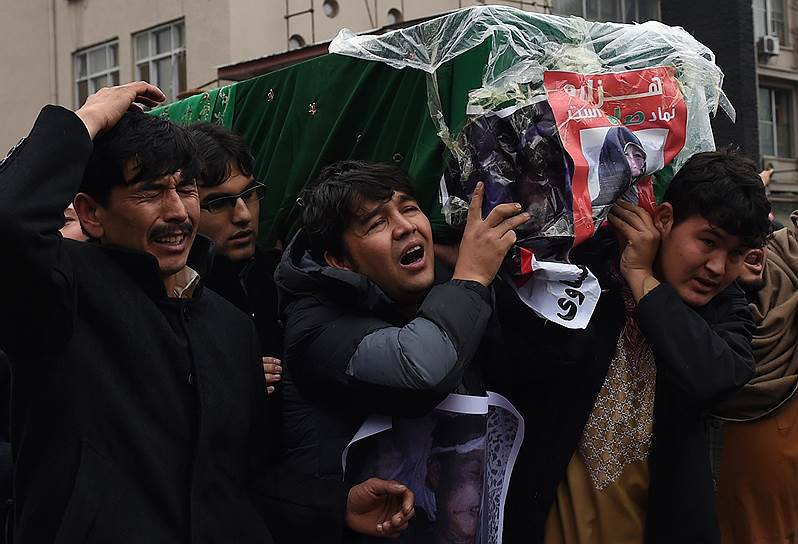
An impressive Shiite minority lives in Afghanistan - after all, the country in the west borders on Iran, is experiencing the long-standing cultural influence of the Persians. According to statistics, Shiism in Afghanistan professes from 7 to 19% of the population. Most likely, the number of Shiites is between the minimum and maximum estimates, that is, 10-15% of the total Afghan population. The main part of the Shiite population of Afghanistan is made up of Hazaras - the Iranian-speaking people of Turkic-Mongolian origin, living in the regions of Central Afghanistan - historical Khazarajat region, and considered the descendants of the Mongol tribes who settled in Afghanistan and adopted the Iranian language and Shiite religion. The Hazaras make up 8-10% of the population of Afghanistan and are Shia-twelve. Also, the double-Shia Shiites are the Farsivans - Persian-speaking residents of the provinces of Herat, Farah and Nimroz. Farsivans are sedentary residents of cities and villages who speak the Dari language. The term “farcivan” itself is actually synonymous with the term “Tajik” - that is, a settled resident, only the Tajik population of northern Afghanistan professes Sunni Islam, and the settled population of the West Afghan provinces is Shiites. The third large group of Afghan Shiites, the Kyzylbashi, the descendants of Iranian warriors and officials, live mainly in the cities of Western Afghanistan. At one time, the Turkic-speaking tribes of the Kyzylbash constituted the military-political support of the Iranian state of the Safavids. Part of the Kyzylbash was located in Afghanistan, where they currently make up about 1% of the population. The Hazaras, the Farsivians, and the Kyzylbashi are orthodox Shia twenties. The Ismailis live in the mountains of Northeast Afghanistan. These are representatives of the Pamir peoples, who sometimes belong to the Tajiks, but in fact are independent ethnic groups. The Pamir peoples - Ishkashim, Vakhan, Sanglits, Mundjan people - inhabit Afghan Badakhshan and maintain close ties with their fellow tribesmen in Tajik Badakhshan and also in Pakistan. Naturally, religious differences have long led to the complex relationship of the Shiite peoples of Afghanistan with the Sunni.
When the Taliban and the Islamic State became more active in Afghanistan, the Afghan Shiites became the primary target of attacks by radical Sunni fundamentalists. Recently, bodies of seven beheaded people were found in Afghanistan. They were all Hazaras. Naturally, suspicions fell on militants - the Taliban, who consider Shiites as apostates. Among the dead was a nine-year-old girl who was beheaded by criminals. In Kabul, there was a mass demonstration against terrorism and the killing of civilians, in which 20 thousands of people took part. The demonstrators demanded an immediate investigation of the crimes against the Hazara national minority, and also called for the resignation of the current Afghan President Ashraf Ghani.
Will Tajikistan defend its borders?
The unstable military-political situation in Afghanistan is a very disturbing factor for the Central Asian republics. First of all, the Tajik leadership is worried about developments in neighboring Afghanistan. It was Tajikistan that for a long time remained the main target of the Afghan militants, given that in Tajikistan the border runs along hard-to-reach mountain sites. In addition, a large Tajik population lives in Afghanistan, having kinship and friendship ties with residents of neighboring Tajikistan. In Afghanistan, Tajiks make up, according to various sources, approximately 30-38% of the country's population. This is the second largest population group in Afghanistan after the Pashtuns. Tajiks played a crucial role in the confrontation of the Soviet military operation in Afghanistan, as well as in the subsequent civil war. It was the Tajiks who became the main force of the Northern Alliance, which opposed the predominantly Pashtun Taliban in composition. Ethnic Tajiks were the key leaders of the Mujahideen - Burhanuddin Rabbani and Ahmad-Shah Masood. Of the Soviet republics of Central Asia, Tajikistan has always remained the least developed socio-economically and culturally and least Russified. After the collapse of the Soviet Union, a bloody civil war broke out in Tajikistan that lasted from 1992 to 1997. and ended thanks to the mediation of Russia and Iran. However, the specter of the civil war still reminds of itself - the military-political situation in Tajikistan is quite tense, and this despite the fact that the President of the country Emomali Rakhmon has been in power for more than twenty years. In 1994, Mr. Emomali Sharipovich Rakhmonov, then — a relatively young, forty-two-year-old politician — became president of Tajikistan, and he took over as chairman of the republic's Supreme Council even earlier — in 1992. The confrontation of the warring political groups in the early 1990's. brought up the usual chairman of the collective farm. Lenin Dangara district of Kulyab region of Tajikistan on the Olympus of republican authority. Rakhmonov headed the regional executive committee of the Kulyab region, and then the Supreme Council of Tajikistan. Despite the fact that at the beginning of the coming to power, the position of Rakhmonov, who was an ordinary party-economic functionary, rather than an influential field commander, seemed to be quite shaky, he managed to retain power and create a relatively stable political regime in Tajikistan.
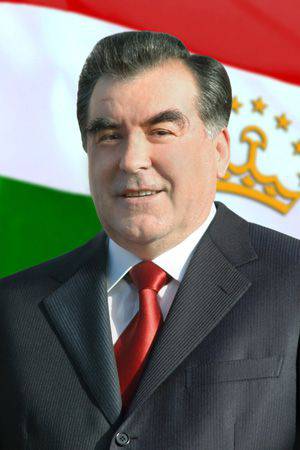
Of course, Rakhmonov is often called an authoritarian leader, but, on the other hand, it is difficult to imagine what would have happened in Tajikistan if Rakhmonov had not succeeded in 1990 — 2000. stabilize the situation in the country, albeit with the help of the Russian Federation. However, having retained power, Rakhmonov was never able to restore the Tajik economy that was destroyed after the collapse of the USSR. Tajikistan has become the poorest and least prosperous state in the post-Soviet space, a significant part of the working-age Tajiks went abroad in search of work, including to the Russian Federation. The mere fact of finding a million Tajik citizens in Russia is currently one of the most important factors in stabilizing the political and economic situation in post-Soviet Tajikistan. Otherwise, the Tajik leadership would have to think about providing a million healthy, able-bodied men with work or means of subsistence. Since this task for the Tajik government is practically unresolvable, the destabilization of the situation in the country would follow immediately.
Socio-economic and political problems turn Tajikistan into one of the most delicate objects for the activities of international radical organizations, including the Islamic State. It should be noted here that the Tajiks were traditionally considered the most religious and traditionalist-minded residents of Central Asia. Therefore, the promotion of religious fundamentalism among the Tajik population has always found its audience. If we take into account the factor of external support from the Afghan radicals, then the situation for the current political regime in Tajikistan can be quite deplorable. Moreover, the events in Tajikistan in recent years show that Emomali Rakhmonov, in general, has little control over the situation in certain regions of the country. So, in 2010, in the Rasht region of the republic, fighting broke out between government forces and armed forces under the command of former leaders of the United Tajik Opposition. In 2012, armed clashes repeated in Gorno-Badakhshan. In 2015, an armed insurgency was raised by General Nazarzoda. Abdulkhalim Nazarzoda before the collapse of the Soviet Union and the beginning of the civil war had nothing to do with personnel service in the armed forces. He worked as a laborer, then managed a warehouse. Participation in the armed formations of the opposition brought him fame. After reconciliation, he continued service in the armed forces of Tajikistan, rose to the rank of major general, and in 2014 was appointed deputy minister of defense of Tajikistan. The leadership of Tajikistan explained the armed clashes with the intrigues of radicals from the Islamic Renaissance Party of Tajikistan. However, it is not a secret that many prominent leaders of the Tajik armed forces, law enforcement agencies and special services are involved in the arms and drug business and have close ties with armed groups in neighboring Afghanistan. The high level of corruption also does not allow to speak about the full protection of the borders of the Tajik state. Meanwhile, it is likely that the "Islamic state" or other radical groups will in the foreseeable future try to penetrate into Central Asia, for which they will choose, first of all, Tajikistan. Indeed, in Tajikistan there is not only a weak political regime compared with neighboring Turkmenistan or Uzbekistan, but also a few armed forces. What is the Tajik army, which, in the event of an attack by militants from neighboring Afghanistan, will have to engage in battle with the armed formations of radical fundamentalists?
By the time of the proclamation of the political sovereignty of Tajikistan, there were practically no Soviet military units on its territory. The republic, unlike other states formed in the post-Soviet space, did not receive any heritage from the Soviet Army. Moreover, the 201st Motor Rifle Division, stationed in Dushanbe, was subordinate to the Ministry of Defense of the Russian Federation. For a long time, it was the Russian troops — motorized rifles and border guards — who played a decisive role in ensuring Tajikistan’s national security. For a long time, the regular army as such was absent in Tajikistan, since even “government troops” were essentially armed units without military discipline, centralized supply, led by field commanders. Despite long-term attempts to turn disparate formations into a full-fledged army, up to the present, the armed forces of Tajikistan remain extremely weak not only in military-technical, but also in organizational terms. The Tajik armed forces include ground forces, mobile forces, air forces and air defense forces. Since Tajikistan does not have access to the sea and large bodies of water, there are no naval or river forces in the country. The Tajik ground forces include 2 motorized rifle brigades deployed in Kurgan-Tyube and Khujand and an artillery brigade in Dushanbe. Mobile troops include a separate motorized rifle brigade of quick reaction and the 7th air assault brigade. The country's air forces include a separate helicopter squadron using airfields in Dushanbe and Khujand, the 536th anti-aircraft missile regiment in Dushanbe and the 45th radio engineering battalion in Dushanbe. However, in fact, the airspace of Tajikistan is protected by the Russian aviation.
The Tajik army is weakly armed with 80 armored vehicles, 12 multiple rocket launchers, 27 artillery guns and mortars, 600 anti-aircraft missile systems and a 21 helicopter. Recruitment of the armed forces is carried out through the recruitment of young men for a term of two years. However, much of the young Tajiks prefer to evade the army. This is connected, as well as general desertion, with uncontrolled hazing in military units of the Tajik army, poor conditions of service and life in military units, poor nutrition. Taking into account the high level of corruption in the country, representatives of the poorest segments of the population are called to serve in the armed forces, which contributes to the further aggravation of the problems of the armed forces in the field of work with personnel. In addition, the criminalization of the Tajik armed forces is a serious problem, from ordinary use of drugs to involvement in criminal trafficking and drug trafficking, smuggling weapons from Afghanistan and so on The level of training of Tajik officers also remains rather weak - despite the fact that the Military Institute operates in the country, the most capable cadets are sent to study in Kazakhstan and the Russian Federation.
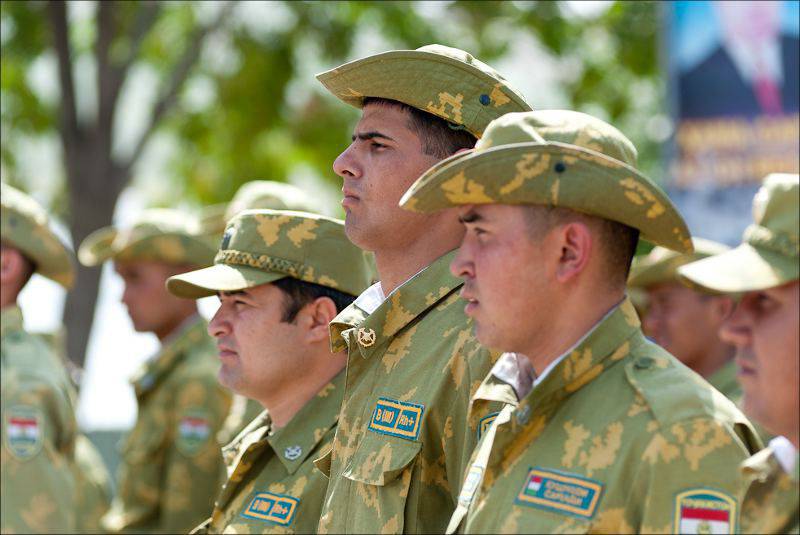
Given the unsatisfactory state of the Tajik armed forces, the 201st military base of the Russian Federation, the former 201st motorized rifle division, remains the main guarantor of the republic’s security - both protecting its external borders and maintaining internal order. The base includes motorized rifle, tank, artillery, engineering, air defense, communications, support units. The military units of the 201st base are deployed in three cities of Tajikistan: Dushanbe, Kulyab and Kurgan-Tyube. The total number of base personnel is 7,5 thousand soldiers and officers. The base includes three motorized rifle regiments, a rocket artillery division, a reconnaissance battalion, a repair and restoration battalion, a material support battalion, a control battalion, an electronic warfare center. It should be noted that Russia is making great efforts to modernize the Tajik armed forces, well aware that difficult military and political conditions of the region, the country should be able to independently defend their borders. The Russian Federation is the main investor and partner of Tajikistan in the field of construction and reorganization of the armed forces. Russian Defense Minister Sergei Shoigu emphasizes that the program for the modernization of the Tajik armed forces is designed until 2025 and will cost Russia $ 200 million. Despite the impressive amount, no other option is possible - the risks of invading extremist groups from neighboring Afghanistan are too great. Moreover, after the Russian border guards left Tajikistan, the protection of the state border of the republic significantly weakened - although Tajikistan has its own border troops of the State Committee for National Security, their level of training and equipment is still incomparable with the Russian border units.
Uzbekistan: the army is stronger, but no less problems
Unlike Tajikistan, Uzbekistan is a much more combat ready to repel possible attacks by extremists from Afghan territory. After the start of the US military operation against the Afghan Taliban, as early as 2001, Uzbekistan began to strengthen the Uzbek-Afghan border. Over the 137-kilometer border with Afghanistan, a special separation barrier was constructed, representing a fence of barbed wire and a second, higher, fence of barbed wire under voltage of 380 volts, as well as minefields. At present, the Uzbek-Afghan border in terms of protection is second only to the border between North and South Korea. The goal of strengthening the Uzbek-Afghan border was not only to defend possible attempts by extremists to penetrate, but also to counter attempts by illegal migrants and refugees from Afghanistan to get to Uzbekistan. Only through the Hairaton Bridge, which crosses the Amu Darya River, is it possible to carry out a transport connection with Uzbekistan. However, despite careful measures to protect the state border, Uzbekistan is also a very interesting object for Afghan extremists. The fact is that the political situation in Uzbekistan, where since independence was proclaimed, that is, almost twenty-five years, President Islam Karimov has been in power, although it remains outwardly stable, is in fact characterized by a cruel suppression of the opposition and the regime’s desire to save changes the existing political system. But the country's numerous economic problems, forcing millions of Uzbek citizens to migrate in search of work to the Russian Federation and Kazakhstan, as well as to other states, become fertile ground for the spread of radical and extremist sentiments. According to the lawyer Sharbatullo Sadikov, Uzbekistan is the leader among the countries of Central Asia in the number of extremist groups operating in its territory and outside the country. The most famous is the Islamic Movement of Uzbekistan. Some experts assess the IMU as the third most important radical movement in the Central Asian region - after the Taliban and Al-Qaida (banned in the Russian Federation). Combat training of IMU members was carried out in training camps in Afghanistan and Pakistan, many militants were run-in during combat operations in Afghanistan, fighting on the side of the Taliban. It is known that many ethnic Uzbeks - from both Afghanistan and Uzbekistan - are currently fighting in Syria and Iraq, as part of the Islamic State’s armed groups.
The recruiters of radical organizations enjoy the unfavorable socio-economic situation in Uzbekistan and are agitating young people to go to war in Syria or act against the authorities in the territory of Uzbekistan itself. In response, the Uzbek leadership is tightening punitive measures against the spread of radical sentiment in the country. For communication with the "Islamic State" in modern Uzbekistan, you can get an impressive term of imprisonment, not to mention the proven participation in the activities of armed groups. According to the National Security Service of Uzbekistan (SNBU), “there is evidence that the IMU and a number of other extremist groups are trying to destabilize the country, but we are taking all measures to prevent this. These steps include not only proactive police operations, but also prevention, as well as public information ”(quoted at: http://www.ntv.ru/novosti/1299698/). In the summer of 2015, the leadership of the security forces of Afghanistan and Uzbekistan agreed to intensify cooperation in countering terrorism and ensuring the security of the Uzbek-Afghan border. It should be noted that areas of Afghanistan adjoin Uzbekistan, populated mainly by the Uzbek population. The Uzbeks are the third after the Pashtuns and Tajiks in terms of the number of people in Afghanistan, ranging from 6 to 10% of the country's population (according to various sources). At the same time, many Afghan Uzbeks in their majority are opponents of radical Islamists. The leader of the Afghan Uzbeks for more than thirty years remains General Abdul-Rashid Dostum (born 1954) - a former member of the PDPA and a general of the DRA army who participated in the Afghan war 1979-1989. against the Mujahideen, and then played an important role in leading the anti-Taliban coalition. General Dostum currently holds the position of one of the two acting vice-presidents of Afghanistan. However, it should be noted that part of the Afghan Uzbeks, especially in Kunduz and Badakhshan, never supported Dostum, and was inclined toward radical fundamentalist movements - the Taliban or the Islamic Movement of Uzbekistan. Thus, the influence of General Dostum on the Uzbek environment of Afghanistan is not unlimited and a significant part of Afghan Uzbeks may well be in the composition of religious-fundamentalist groups. Meanwhile, General Dostum recently visited Russia, Kazakhstan and Uzbekistan. According to the media, in Russia the vice-president of Afghanistan and the leader of the Afghan Uzbeks made a request for the supply of military equipment to the country - for the needs of the fight against terrorism, but what equipment the general had in mind and whether the supplies will be organized is not yet known.
The leadership of Uzbekistan, well aware that radical fundamentalism is currently the most important political and military danger to the country, is at the same time trying to play a double game. Counting on US support, Uzbekistan withdrew from the CSTO, which greatly complicated its defense system. It is obvious that Tashkent is counting on its own forces and help from the United States in the event of extremists attacking the southern borders of the republic. Indeed, the armed forces of Uzbekistan are currently the strongest in Central Asia. The strength of the Uzbek army reaches, according to 2013, 48 thousand soldiers and officers. Of these, 24,5 thousand are in the Ground Forces, and the remaining 24 thousand serve in the Air Force and Air Defense, the National Guard of Uzbekistan and the border service. The Ground Forces includes one tank corps, ten motorized brigades, one light mountain, one airborne, three air assault and four engineering brigades, one brigade of the national guard. The ground forces are armed with 340 tanks, 717 armored personnel carriers and combat vehicles, 137 self-propelled artillery pieces, 200 towed artillery pieces, 108 multiple launch rocket systems, 5 operational-tactical missile systems. The country's Air Force and Air Defense includes 4 aviation brigades, a helicopter brigade, a military transport brigade, a helicopter squad, two anti-aircraft missile brigades and one separate fighter aviation squadron. About 80 fighters and fighter-bombers, 34 front-line bombers and 20 attack aircraft, 81 helicopters are in service. The border forces of Uzbekistan include river units deployed in the Amu Darya. The official name of the Uzbek fleet - Military river forces of the State Border Protection Committee of the National Security Service of the Republic of Uzbekistan. River force boats play an important role in patrolling the Uzbek-Afghan border along the Amu Darya River. Armored boats of the military river forces ensure the safety of the 156-kilometer river border along the Amu Darya, fulfilling the tasks of preventing the smuggling of drugs, weapons, and the penetration of illegal migrants and extremists from the territory of Afghanistan. It is known that the USA provides some military assistance to Uzbekistan. So, in January 2015, an agreement was reached between the President of Uzbekistan Islam Karimov and the commander of the Central Command of the US Armed Forces, General Lloyd James Austin, on the supply of 308 units of wheeled armored vehicles with reinforced mine protection and 20 units of armored recovery vehicles. So the United States implements the program "Transfer of surplus weapons." According to the US State Department, Uzbekistan has an obvious need for armored vehicles to use them in the fight against terrorism and drug trafficking. Also, at the end of April 2015, an agreement was signed between Uzbekistan and the United States on the transfer of patrol boats to the republic for the needs of the Uzbek coast guard in the Amu Darya.
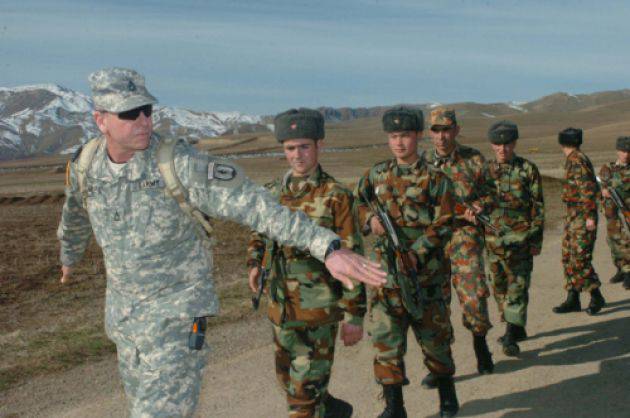
However, despite the fact that the Uzbek army in size, armament and level of preparedness significantly exceeds the Tajik, Kyrgyz and Turkmen armed forces, in fact, the armed forces of Uzbekistan face the same problems as the armies of the less powerful neighbors of the republic. The main ones are the problems of ensuring the armed forces and the problems of maintaining military discipline and morale in army units. In modern Uzbekistan there are many social and economic problems. Young Uzbeks are more willing to go to work in Russia and other states than go to serve in the armed forces of their country. We should not forget about the progressive spread of radical views among the young population of Uzbekistan. Obviously, the withdrawal of Uzbekistan from the CSTO was erroneous. Demonstrating its “independence” from Russia, the Uzbek leadership forgets that millions of Uzbek citizens are currently working on the territory of the Russian Federation - on the construction of facilities, in the field of housing and communal services and consumer services for the population. The expulsion of foreign migrants from Russia is equivalent to a social explosion in Uzbekistan, because, despite the difference in economic potential, Uzbekistan just as well will not be able to employ the returned “guest workers”, like neighboring Tajikistan. It means that the country still has an extremely high risk of a social explosion and so far only the repressive policy of law enforcement agencies and special services allows the government to control the situation in the republic.
Turkmenistan remains “weak link”
Turkmenistan is also under threat of militant invasion from neighboring Afghanistan. The most closed post-Soviet republic of Central Asia is the most economically secured state in the region. However, she also faces a number of problems caused by the specifics of the historical, cultural and political development of Turkmen statehood. In the recent pre-Soviet past, Turkmens were typical nomads, with corresponding tribal division and tribal psychology. In fact, tribal division in Turkmenistan is still preserved. Meanwhile, the preservation of archaic institutions hinders the full development of the country, and although Turkmens in general are less likely than Tajiks or Uzbeks to accept radical ideas, the ideological influence on the population of the republic, especially on youth, by radical organizations operating in neighboring Afghanistan. By the way, in the modern history of Afghanistan, Turkmen, unlike Tajiks and Uzbeks, have never possessed important positions, although they make up about 3% of the country's population. The Turkmen environment of Afghanistan is poorly politicized, but Ashgabat is concerned that, under the influence of the Islamic Movement of Uzbekistan, radical groups may consolidate their influence among Afghan Turkmen. Around the latter, in turn, young Turkmens from Turkmenistan can rally, dissatisfied with the policies of the republican government and ready with arms to stand on the side of religious fundamentalists. Therefore, Turkmenistan has recently been paying considerable attention to strengthening the protection of the state border with Afghanistan, closely cooperating with Uzbekistan in this direction. By the way, Turkmenistan is united with Uzbekistan by the position of distancing itself from cooperation with the Russian Federation within the framework of the CSTO. The state border of Turkmenistan and Afghanistan was previously guarded by Russian border guards, but then, in a defiant desire for sovereignty, Turkmenistan refused to cooperate with Russia on protecting the state border, which, of course, negatively affected the effectiveness of measures to protect the Turkmen borders. But we already mentioned the dangers of this position - the Turkmen armed forces do not have the potential to effectively repel attacks on the state border of numerous and well-armed formations from the territory of neighboring Afghanistan. The units of the Turkmen ground forces total only 18,5 thousand. soldiers and officers. The Turkmen army consists of three cadre of motorized divisions, a training division, two motorized and one artillery brigades, two anti-aircraft missile brigades, one brigade of multiple launch rocket systems, a missile and anti-tank regiments, an engineering regiment, and an air assault battalion. In addition, 12 thousand soldiers and officers, compiled into 12 border detachments, serve in the troops of the State Border Service of Turkmenistan. The country's air forces are not numerous, as are the naval forces deployed on the Caspian Sea. Serious problems in ensuring the national defense and security of Turkmenistan are: 1) the weak level of protection of the state border with Afghanistan; 2) the dispersal of the population in desert Turkmenistan, which creates obstacles to the effective organization of local defense; 3) tribal structure of Turkmen society with the corresponding contradictions that occur in power structures; 4) the lack of developed relations with Russia and Kazakhstan in the field of defense and security of the country; 5) the general political stagnation in the country, contributing to the radicalization of youth.
Kyrgyzstan: there is no border, but there are problems
Finally, it is impossible not to draw attention to the situation in Kyrgyzstan. Unlike Uzbekistan, Tajikistan and Turkmenistan, Kyrgyzstan has no direct border with Afghanistan. But this does not mean isolation from the general political processes in the region and from the risks caused by the activation of radical fundamentalists in Afghanistan. First, Kyrgyzstan has already encountered religious radicalism - when in 1999, the formation of the Islamic Movement of Uzbekistan invaded the territory of the republic. Secondly, in Kyrgyzstan there is also a very difficult socio-economic situation, aggravated by inter-ethnic contradictions between the Kyrgyz and Uzbeks inhabiting the southern regions of the republic. As for Afghanistan, about 15 thousand Kyrgyz live in this country of the Pamirs and do not play a significant role in Afghan politics. For the Kyrgyz as a whole, there has always been less religious religion compared to the sedentary peoples of Central Asia, but in recent years, radical sentiments have spread in the Kyrgyz environment, both in Kyrgyzstan itself and in Russia and other countries of emigration. However, unlike Turkmenistan and Uzbekistan, Kyrgyzstan is a member of the CSTO, that is, in the case of armed aggression, it can count on the help of allies in the coalition. The actual armed forces of Kyrgyzstan are few. They include military units of the General Staff and the Ministry of Defense (12 thousand troops), the National Guard (3 thousand soldiers), troops of the State Border Service (6,8 thousand soldiers). Kyrgyzstan pays great attention to the protection of the state border, but such problems as corruption do not bypass the republic’s security agencies. As a result, Kyrgyzstan remains an attractive route for drug traffickers traveling from Afghanistan through Tajikistan and Kyrgyzstan. Militants of extremist groups operating in Afghanistan and Pakistan can also be sent through Kyrgyzstan. Finally, one should not forget that the mountainous regions of Kyrgyzstan may be of interest to militants of radical fundamentalist organizations trying to sneak into the territory of the PRC. After all, Kyrgyzstan borders the territory of the Xinjiang Uygur Autonomous Region of China, in which a large part of the population are Uygur Muslims, among whom anti-Chinese separatist sentiments are widespread.
Thus, we can conclude that the situation on the southern borders of Russia is not very favorable. The presence of a dangerous threat in the face of the Afghan radical organizations, focused on the gradual infiltration into Central Asia, raises questions about the effectiveness of the system to counter possible aggression in the border republics of Central Asia. But the socio-economic and political situation in most republics of the region is such that in the foreseeable future they may well become not only a target for terrorist attacks, but the epicenter of their activities. Main task of Russia is to maintain relations within the CSTO and to establish cooperation with Turkmenistan and Uzbekistan as countries that are not members of the CSTO, but also seeking to protect their borders against possible attacks by extremists.
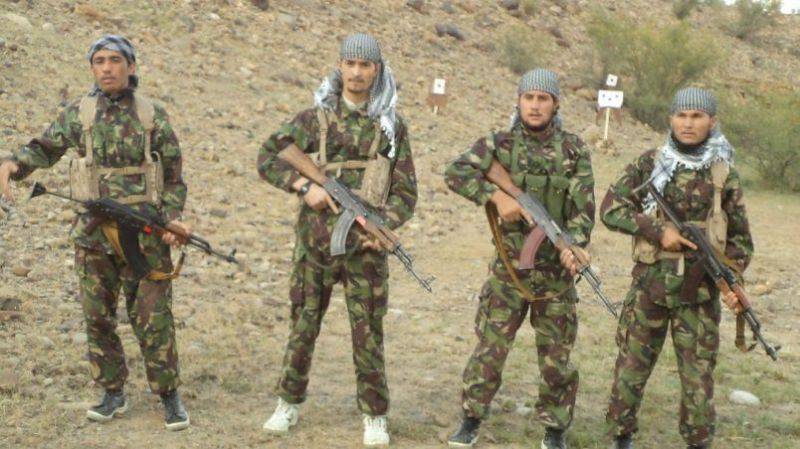
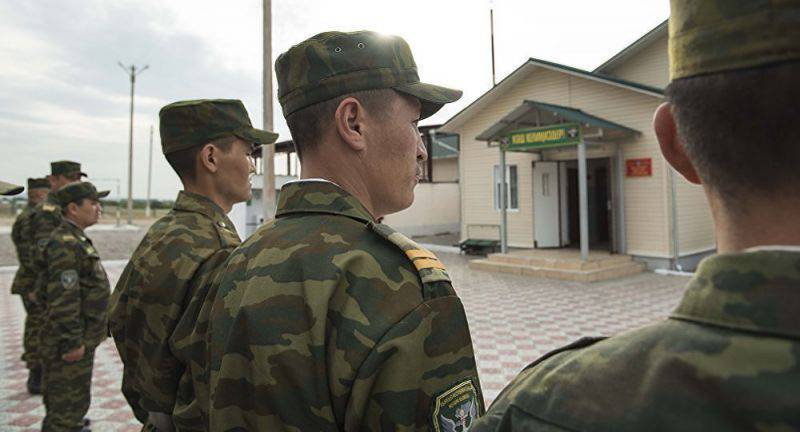
Information